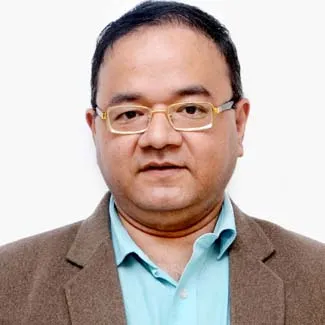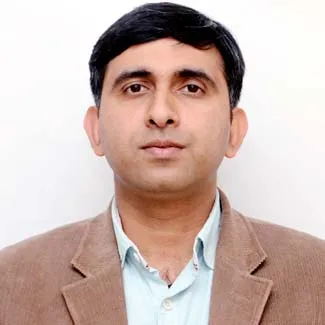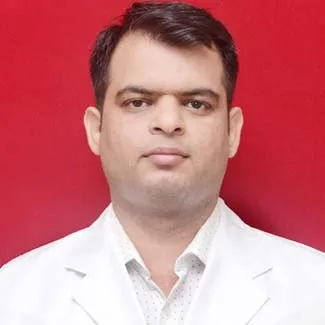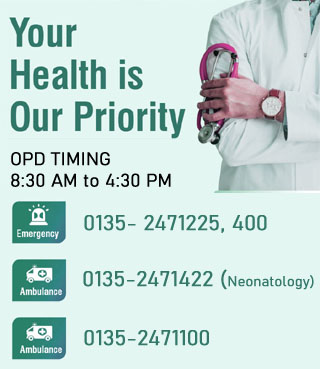
Cardiology / Heart
Cardiology is a branch of medicine that deals with the disorders of the heart as well as some parts of the cardiovascular system. The field includes medical diagnosis and treatment of congenital heart defects, coronary artery disease, heart failure, valvular heart disease and electrophysiology.
Our Team

Dr. Anurag Rawat
Associate Professor & Head

Dr. Kunal Gururani
Associate Professor

Dr. Chandra Mohan Belwal
Associate Professor
-
Angina
Angina is a type of chest pain caused by reduced blood flow to the heart.Angina is a symptom of coronary artery disease.
-
Heart Attack
A blockage of blood flow to the heart muscle. A heart attack is a medical emergency. A heart attack usually occurs when a blood clot blocks blood flow to the heart. Without blood, tissue loses oxygen and dies. Symptoms include tightness or pain in the chest, neck, back or arms, as well as fatigue, lightheadedness, abnormal heartbeat and anxiety. Women are more likely to have atypical symptoms than men.Treatment ranges from lifestyle changes and cardiac rehabilitation to medication, stents and bypass surgery
-
Enlarged Heart
An enlarged heart, which is usually a sign of another condition. Cardiomegaly is usually a sign of another condition such as a heart valve problem or heart disease. It may also signal a prior heart attack. It can also occur from bodily stress caused by pregnancy or certain infections. The underlying condition needs treatment. This may include medication, medical procedures or surgery, in rare cases.
-
Coronary Artery Disease (CAD)
This is a condition in which the heart’s major blood vessels may be damaged or diseased. The usual cause is the build-up of plague. This causes coronary arteries to narrow, limiting blood flow to the heart. Treatment consists of self-care, blood thinners, lifestyle changes, medication, angioplasty and surgery.
-
Arrhythmia
This disease results from improper beating of the heart, whether irregular, too fast or too slow. Cardiac arrhythmia occurs when electrical impulses in the heart don’t work properly. Symptoms may include a fluttering in the chest, chest pain, fainting or dizziness. Treatment includes anti-arrhythmic drugs, medical procedures, implantable devises and surgery.

-
Congestive heart failure
This is a chronic condition in which the heart doesn’t pump blood as well as it should. Symptoms include shortness of breath, fatigue, swollen legs and rapid heartbeat.
-
Heart valve Disease
Your heart has 4 valves that open and shut to facilitate flow of blood between the heart’s four chambers, lungs and blood vessels. A malfunction could result in hampering this blood flow. This could result in valve problems including infections such as rheumatic fever, congenital heart disease or even heart attack.
-
Pericardial Disease
Any disease related to the pericardium, the sac that surrounds the heart, is referred to as a pericardial disease. Pericarditis or inflammation of the pericardium caused by viral infection is a common ailment, apart from inflammatory ailments such as Lupus or rheumatoid arthritis, or injury to pericardium. Open-heart surgery can result in pericarditis.
-
Cardiomyopathy (Heart Muscle Disease)
Cardiomyopathy is a disease of the heart muscle, which may get stretched, thickened or stiff. As a result the heart become weak to pump effectively. Possible causes include genetic conditions, reaction to certain drugs or toxins, viral infection and chemotherapy.
-
Congenital Heart Disease
Congenital heart disease may occur when the heart is forming in a baby in the womb. Abnormalities may occur right after birth or symptoms may show up upon attaining adulthood.
Septal abnormalities or holes in the wall that separates the two sides of the heart are most common. A procedure can patch the hole. Pulmonary Stenosis is a condition in which the flow of blood to the lungs is reduced due to narrow valves.
-
Angioplasty and stents
Angioplasty is a treatment that makes use of stents to improve blood flow to the heart by opening a blocked coronary artery. The process involves special balloons or metal mesh tubes to open blockages.
-
Coronary artery bypass graft surgery
Bypass surgery is performed on blocked arteries, to carry blood to the heart muscles.
-
Heart Valve Repair or Replacement Surgery
This surgery repairs or replaces damaged or diseased valves. The procedure may involve open-heart surgery or minimally invasive heart surgery.
-
Artificial pacemaker surgery
A pacemaker is a small device that is implanted in the chest through a surgical procedure to control heartbeat.
-
Defibrillation
This delivers an electrical shock across the chest or through application of adhesive ‘hands-free’ pads. In the eventuality of cardiac arrest an electric charge is used to start a normal rhythm in the heart.
-
Thrombolytic therapy
Also called fibrinolytic therapy, it breaks down blood clots formed in the blood vessels, using medication.
-
Device implantation
Pacemakers, balloon catheters and other devices can help regulate heartbeat and support blood flow.
-
Maze Surgery
This surgery can create new paths for electrical signals to pass through. This helps in treating atrial fibrillation.

